Volume 3, Issue 1
Displaying 1-16 of 16 articles from this issue
- |<
- <
- 1
- >
- >|
-
Article type: Cover
2005Volume 3Issue 1 Pages Cover1-
Published: June 10, 2005
Released on J-STAGE: October 02, 2017
Download PDF (584K) -
Article type: Index
2005Volume 3Issue 1 Pages Toc1-
Published: June 10, 2005
Released on J-STAGE: October 02, 2017
Download PDF (37K) -
Article type: Index
2005Volume 3Issue 1 Pages Toc2-
Published: June 10, 2005
Released on J-STAGE: October 02, 2017
Download PDF (34K) -
Article type: Article
2005Volume 3Issue 1 Pages 1-
Published: June 10, 2005
Released on J-STAGE: October 02, 2017
Download PDF (179K) -
Article type: Article
2005Volume 3Issue 1 Pages 3-11
Published: June 10, 2005
Released on J-STAGE: October 02, 2017
Download PDF (1040K) -
Article type: Article
2005Volume 3Issue 1 Pages 12-21
Published: June 10, 2005
Released on J-STAGE: October 02, 2017
Download PDF (918K) -
Article type: Article
2005Volume 3Issue 1 Pages 22-27
Published: June 10, 2005
Released on J-STAGE: October 02, 2017
Download PDF (586K) -
Article type: Article
2005Volume 3Issue 1 Pages 28-39
Published: June 10, 2005
Released on J-STAGE: October 02, 2017
Download PDF (1233K) -
Article type: Article
2005Volume 3Issue 1 Pages 40-47
Published: June 10, 2005
Released on J-STAGE: October 02, 2017
Download PDF (902K) -
Article type: Article
2005Volume 3Issue 1 Pages 48-56
Published: June 10, 2005
Released on J-STAGE: October 02, 2017
Download PDF (964K) -
Article type: Article
2005Volume 3Issue 1 Pages 57-66
Published: June 10, 2005
Released on J-STAGE: October 02, 2017
Download PDF (1066K) -
Article type: Article
2005Volume 3Issue 1 Pages 67-68
Published: June 10, 2005
Released on J-STAGE: October 02, 2017
Download PDF (202K) -
Article type: Article
2005Volume 3Issue 1 Pages 69-71
Published: June 10, 2005
Released on J-STAGE: October 02, 2017
Download PDF (617K) -
Article type: Article
2005Volume 3Issue 1 Pages 72-73
Published: June 10, 2005
Released on J-STAGE: October 02, 2017
Download PDF (394K) -
Article type: Appendix
2005Volume 3Issue 1 Pages 74-
Published: June 10, 2005
Released on J-STAGE: October 02, 2017
Download PDF (28K) -
Article type: Appendix
2005Volume 3Issue 1 Pages 80-
Published: June 10, 2005
Released on J-STAGE: October 02, 2017
Download PDF (28K)
- |<
- <
- 1
- >
- >|
